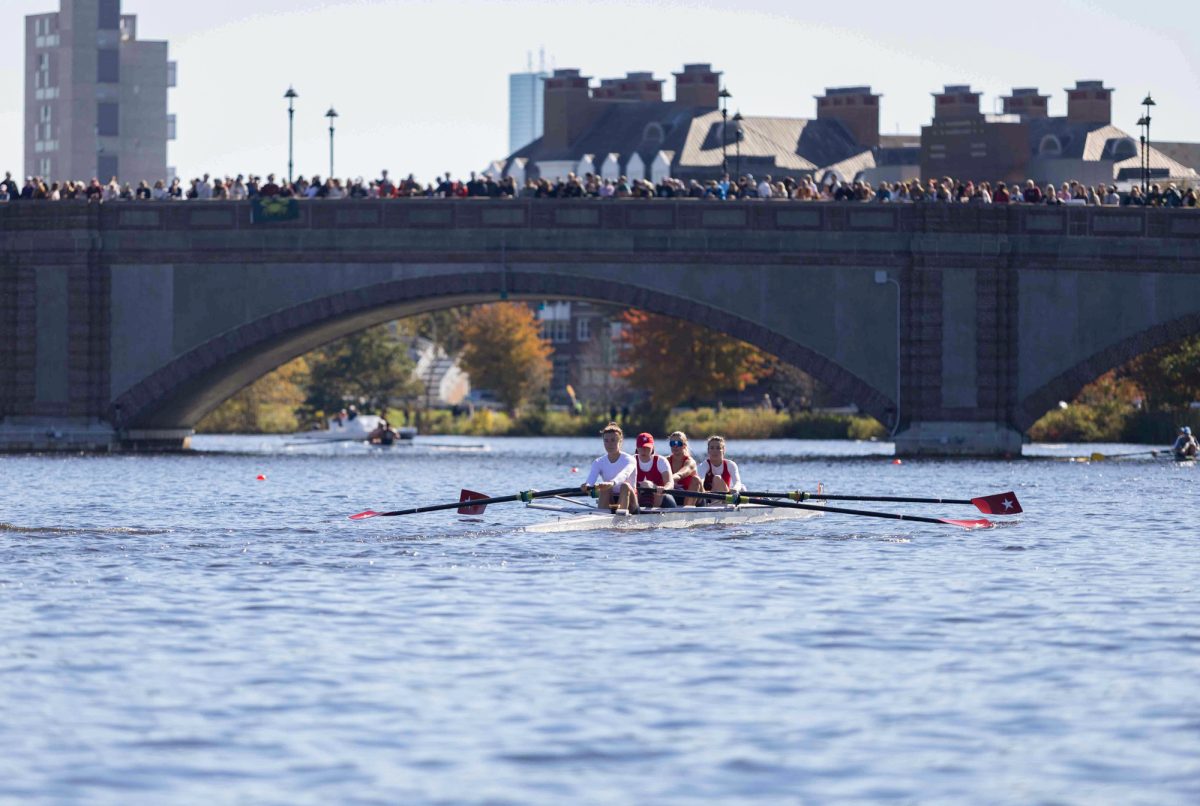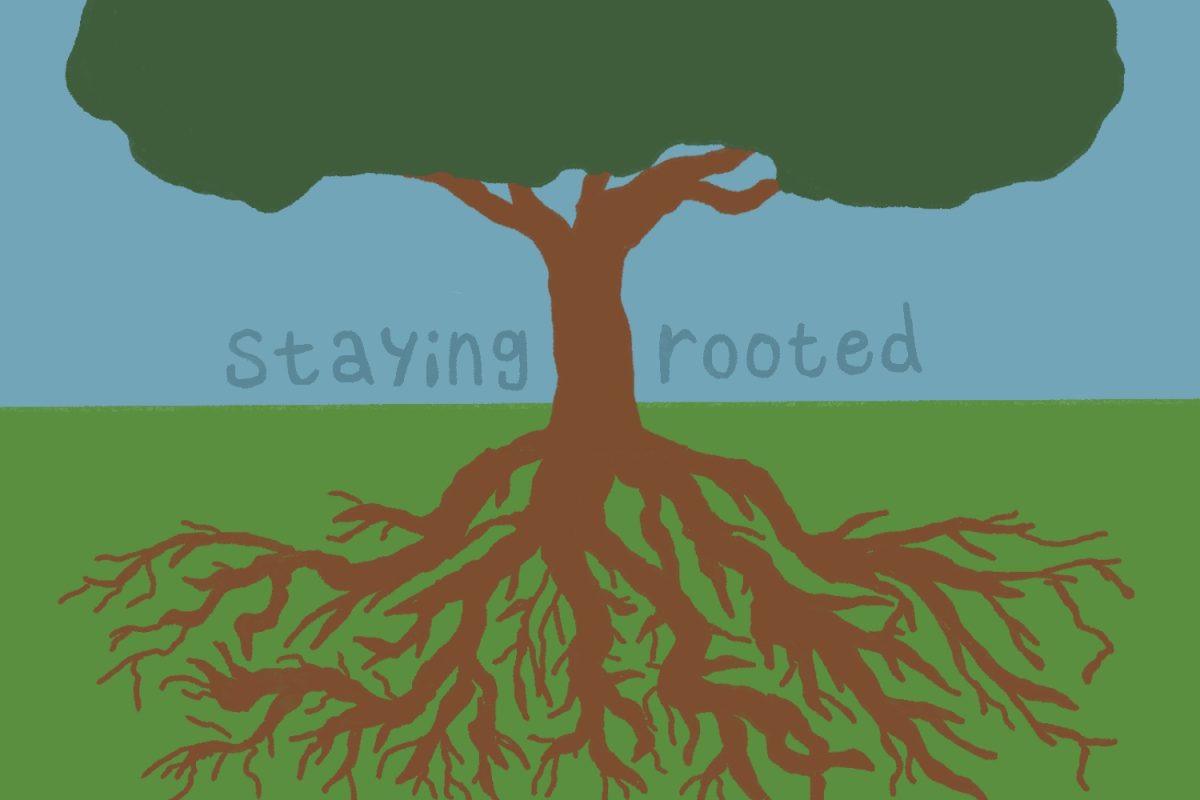Kate Vander Wiede places her bare feet on the slackline suspended a few feet off the ground between two large trees in a park in the South End. She stands up on the line with her hands over her head for balance, and spectators gather in awe.
One man asks to try, steps on the line, and immediately falls off.
‘It’s harder than it looks,’ he said, but wants to try again . . . and again, and again. Reluctantly, he says he needs to go, looking down at his two dogs panting impatiently. Vander Wiede, an elite Boston slackliner, tells him about a slackline event at the Boston Ski and Snowboard Festival at the end of the month, and he says he will be there.
Success ‘-‘- another one hooked.
‘We are witnessing the birth of a sport,’ says Maria Quinones, who started slacklining in the 1970s in Colorado and has watched excitedly as the sport gained popularity in recent years. The sport has invaded parks, open spaces and anywhere slackliners can find an anchor for their wobbly webbing.
Slacklining is part tightrope walking, part meditation and all concentration. Slackliners mount the flat mesh webbing, strung between two anchors, normally trees, and make their way across the increasingly shaky rig until they reach the opposite end.
‘Slacklining seems like a silly sport when you look at it,’ Vander Wiede said. ‘You are just walking from one side to another.’
Easier said than done. A movement so small as a breath can cause the line to sway back and forth.
Some say the draw of slacklining is the challenge of staying on the line a little longer than the last try. Others say the therapeutic quality of walking the line keeps them coming back.
But for whatever reasons, slacklining’s popularity is growing rapidly.
The Boston Slackliners Meetup.com group has added 153 members since it was created in August of last year. The group organizes slacklining sessions on the Charles River Esplanade on Sundays. And with rock climbing gyms like MetroRock in Everett, installing anchors for slacklines, slackliners in Boston can take refuge from cold winters.
The Boston community of slackliners is not as big as that of Los Angeles or Boulder, but it is definitely growing. Because the sport evolved out of rock climbing, it is natural that cities in Colorado have larger more supportive communities, Vander Wiede says.
In Europe, however, the sport has gained much more recognition than in the U.S. Much of this is due to the reluctance of many U.S. climbing companies to endorse the sport as anything more than just a passing fad, Quinones says.
That may be changing though, according to the president of Gibbon Slacklines U.S.A. Ricardo Bottome. Gibbon, which is based in Germany but opened a U.S. division last year, distributed their slackline products to 15 REI stores last July. Now, the company distributes to 106 of REI’s 114 stores.
New websites like slacklineexpress.com and slackline.net have launched in the last few years to promote the sport and sell equipment. WikiHow even has a page detailing how to build and walk a slackline.
The Internet has allowed companies like Slackline Brothers and Gibbon U.S.A. to successfully fuel the niche market of slacklining. The Internet has even made possible offshoots of slacklining like yogaslackling, tricklining and highlining.
‘It’s wonderful that slacklining is going in so many directions,’ says Adi Carter of yogaslackers.com. Carter’s website sells an especially taught slackline designed specifically for yogaslacking, or practicing yoga on a slackline.
Quinones’s company Slackline Brothers sells a standard one-inch wide slackline that is the most versatile.
Gibbon sells a slackline that is wider with more spring for tricklining, the flashiest form of the sport, where slackliners use the elasticity of the line to launch themselves into the air doing flips and spins.
For the newcomer, however, standing on the line by itself is a challenge. ‘Beginners get frustrated because they expect to be able to do this thing that some people make look so easy,’ Vander Wiede said. As with any skill though, practice makes perfect. When Vander Wiede started out, she was spending two hours a day slacklining outside or at the gym.
It’s rare that a new slackliner can make it across on the first try. Starting out, it is better to try a shorter line to keep the sag in the middle to a minimum.
Beyond the initial challenges that new slackliners face, the sport can be therapeutic, educational and inspirational.
Quinones says one of her favorite parts of slacklining is watching the ‘Aha!’ moment of newcomers to the sport. ‘After they get through the giggles and the embarrassment, the inner child comes through,’ she says. ‘People realize, ‘Wow, I can do this!” Quinones has helped put all kinds of people on slacklines, from 60-year-olds to kids with Down syndrome.
Learning to slackline can be like learning to ride a bike ‘-‘- starting out with training wheels can ease the initial fear. After a day of slacklining with first timers, Quinones’s shirtsleeves are always stretched out and soggy from the sweaty palms of the people she has guided along the line.
Once curious onlookers have asked the perpetual question, ‘Are you in the circus?’ they all want to walk the wobbly line.















































































































null • Aug 3, 2010 at 2:22 pm
I want to thank you Thomas for writing about Slackline. I also want to give credit where credit is do.<p/> I did not start Slackline in the 70s’. Its early days have roots in Yosemite Valley in California in the climbing community. IMO the art of balance is inherent in humanity and has a very long history. From ancient funambulists to Slackliners/Highliners today. <p/>Read about Slackline on slackline.com slackline.net, wikipidia, chongonation.com… <br/>Slacklining is practiced all over the world! And there are quite a few clubs on campuses, community climbing gyms, and slackline companies and web sites out there devoted to the craft. We were simply the first . <p/>It’s very gratifying to see the momentum grow.There are as many styles as there are slackliners. And Slackline offers many benefits such as equilibrium, strength, concentration, fun, clarity… Slackline is intrigging and inspiring.<p/>I wish to see a slackline in every school, rehab center, park, and playground around the world! Join the balance revolution! Get inspired!<br/><p/>Peace